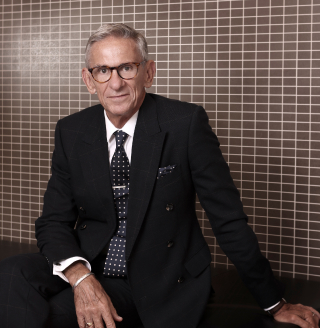The 1953 Morris Minor utility was small by any standard. Its cabin was barely big enough for one mum and one dad, so all the kids got bundled into the back. It was right there in the back of the old ute, sitting shoulder-to-shoulder with my two big brothers on the rattling metal tray, that I first heard the awful news. Shortly after noon, US-time, on 22 November 1963, John Fitzgerald Kennedy, the 35th President of the United States of America, was shot down on the streets of Dallas, Texas. Even as a little kid, when my parents pulled up to the roadside to solemnly report what they had just heard on the radio, I understood immediately from the shock and sadness in my mother’s voice the world had changed forever. Fifty-four years later, who doesn’t still remember that terrible day?
The recent decision by US President Donald Trump to release thousands of previously top-secret government documents concerning the 1963 JFK assassination has unearthed a lot of bitter memories, and re-invigorated many dusty old conspiracy theories that have long haunted us and never quite been laid to rest. The assassin’s bullet struck down not just a politician, but the hopes and aspirations of a generation.
John Fitzgerald Kennedy was a great twentieth century hero, the handsome young warrior who came home from the war to became king of a modern Camelot – an enlightened realm of post-war optimism, the promise of racial tolerance, and dreams of travel to the moon. When the young king declared in September 1962 “we choose to go to the moon and do other things, not because they are easy, but because they are hard,” his subjects understood. John Kennedy was speaking to the hearts and minds of a generation who had suffered the unthinkable horror of a devastating global war, and had come out the other side, stronger and better than ever. It was a moment in history, a time for greatness, for a new world where everything and anything was possible. And Kennedy was the man of that moment.
So when he was cut down it seemed unfathomable that a skinny, nondescript loner called Lee Harvey Oswald was arrested and charged as the only culprit in a crime destined to change the course of modern history. How could this one unimpressive little man have such a cataclysmic influence on the hopes and dreams of all of us?
An official ten-month investigation by the Warren Commission from November 1963 to September 1964 concluded Oswald acted alone. But in the years that followed doubts and concerns continued to circulate incessantly. In an article in February 1967 the British newspaper The Sunday Times noted that of 18 critical witnesses who testified before the Warren Commission all but two had died of unnatural causes within three years of the assassination. According to an actuary quoted by the paper, the probability of that happening was a staggering 100,000 trillion to one.
Then, in 1979, the United States House Select Committee on Assassinations (HSCA) found evidence of an additional gunshot. Based on analysis of an audio recording taken at the time of the shooting, the HSCA found there was “… a high probability that two gunmen fired at [the] President,” although it was unable to identify any individuals or groups involved.
However, just as the Warren findings had fallen into doubt, cracks began appearing in the conspiracy alternative. When the HSCA asked to review the Sunday Times 100,000 trillion to one actuarial study, the paper’s lawyers were forced to concede the article was “based on a careless journalistic mistake.” It seems the reporter had asked the wrong question, namely “what were the odds against fifteen named people out of the population of the United States dying within a short period of time,” instead of “what were the odds against fifteen of those included in the Warren Commission index dying within a given period.” A senior actuary estimated that figure to be a far less impressive 57.09 %, or roughly one in 1.75.
Then, after the HSCA asked the US Justice Department to review the acoustic evidence of a second gunman, in 1982 the Committee on Ballistic Acoustics reported the unexplained gunshot sound was in fact recorded about one minute after the president had been shot, and his motorcade had been re-directed to the hospital. The Justice Department concluded “no persuasive evidence can be identified to support the theory of a conspiracy in the assassination of President Kennedy.”
Yet national polling in 2013 showed that 60% of all Americans still believed a group of conspirators murdered their president.
So no doubt the conspiracy theorists were buoyed and intrigued this year when Donald Trump tweeted he would “be allowing” the release of “long blocked and classified JFK files,” sensing the maverick politician was about to lift the lid on dark and murky secrets.
Alas, perhaps like the conspiracy theories themselves, the truth is less dramatic. In 1992, the US Congress passed the JFK Assassination Records Collection Act, requiring the National Archives to release the files by October 2017. The time had come.
So far there is no smoking gun, or any magic bullet. Perhaps there never will be. But perhaps also, more than half a century later, we no longer need the conspiracy theories as we once did. Now that our hearts have finally had time to heal, perhaps all we need is the memory and lasting legacy of a great twentieth century hero.












